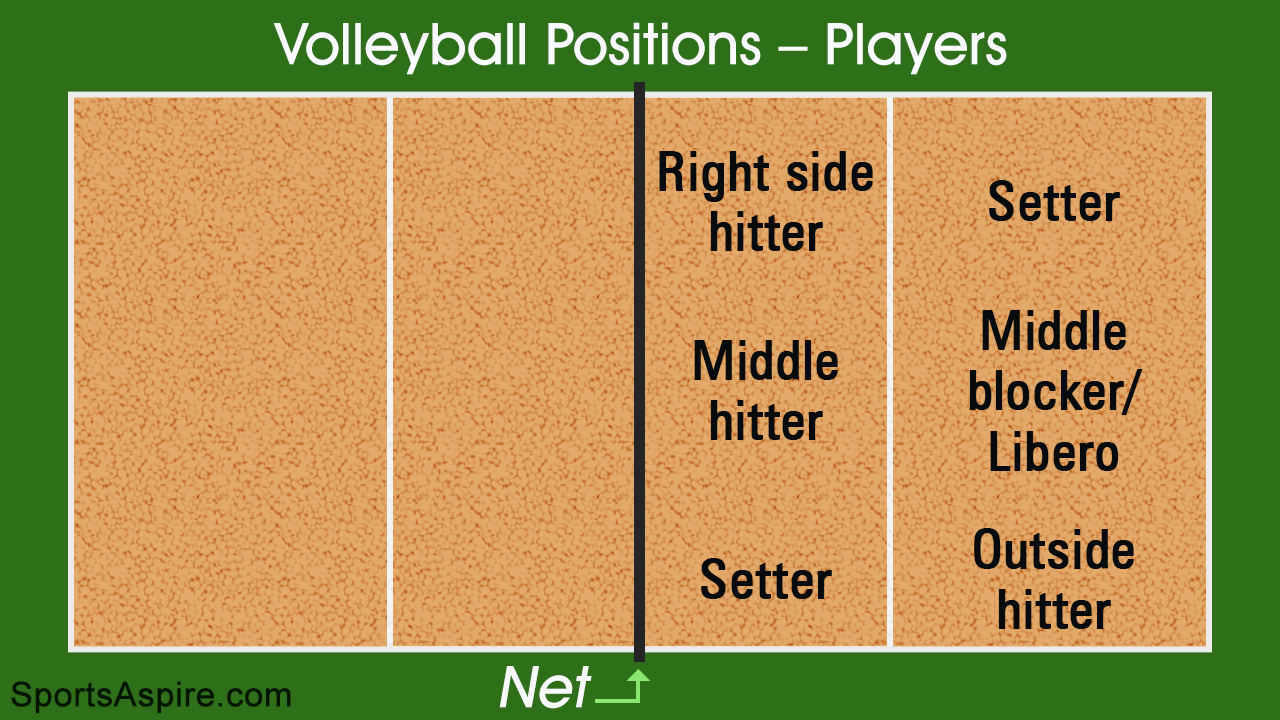Volleyball is an up-and-coming sport in our area. Maybe you have a child would would like to play or a friend invites you to watch their match. To play or watch volleyball, you need to know the basics so here's a summary.
 |
There are six positions in volleyball: Libero, Setter, Defensive Specialist, Middle Blocker, Outside Hitter, and Opposite Hitter. You can refer to these positions by name or by court number. Rotations work by every player on the court moving once clockwise.
- Setter :A Setter’s main job is to set the ball to either the Outside or Opposite Hitter for them to hit the ball over the net. Setters are in charge of what happens on the court. The setter almost always gets the second touch each play.
- Opposite Hitter : AKA Right-Side Hitters, are normally in position 4, or the Front-Right side of the court. Their job is to, when the setter sets the ball to them, hit the ball over the net. They take control over the right side of the court, and if the setter can’t get the second ball, then the Opposite Hitter is most likely going for the second ball. The majority of Opposites are left-handed.
- Outside Hitter : The Outside HItter’s main job is quite similar to the job of the Opposite Hitter: Wait for the setter to set them, so they can spike or hit the ball over the net. Opposite Hitters are amazing and, specifically at a youth level or age, are really talented in spiking. Outsides are usually very good blockers. If you only know how to hit the ball, you won’t get very far in being an Outside Hitter.
- Middle Blocker: Middle Blockers are often very tall and the tallest person on the court. Their responsibility on the court is to block the ball, hence their name, and to hit the ball. They don’t get digs as often as anyone else on the court and stand in the front center of the court most of the time. Middles need to have quick reflexes and a fast transition between defense and offense.
- Defensive Specialist : A defensive specialist needs to be able to work under high pressure, make the most accurate passes, and needs to be quick on their feet. When there is a strong server on the opposing team, a coach would normally sub out one of the players for the DS.
- Libero : I bet you’ve watched a volleyball match and went, “Why is she/he wearing a different colored jersey?” Well, that’s because Liberos are not allowed to be in the front row, so they wear that to help the coach and the ref keep track of where the Libero is. Liberos are normally the best at passing and defense. Commonly, the Libero is the shortest on the court.

It also helps to know some terminology. Here are simple terms to get you started:
- Serving: Hitting the ball, underhand or overhand, and inside the court Block: Jumping and holding your arms near the net to stop the ball
- Serve Error: When the attempted serve doesn’t go over the net/ball goes out of bounds Line Fault: Stepping on or over the court line whilst serving
- Bump: A pass/ serve receive
- Set: Second ball; in a throwing-like motion, passing the ball over to be hit over the net Spike/Hit: Attempting to hit the ball with certain force so that the opposing team cannot receive the ball
- Line Shot: Spiking a ball close to the sidelines
- Dig: Successfully passing a spike/hit from the opposing team
- Joust: When the ball falls in the middle of the net and both teams make a play on the ball
- Pancake: When a player puts the palm of their hand on the ground before the ball makes contact with the floor in that same spot
- Ready Position: A position a player makes when the other team is serving in order to quickly receive and pass the ball to the setter
 |
And Finally, Rules! No sport is complete without rules. Some of these rules help you to understand how basic play goes, whether they’re to help understand the game or guidelines. Here are some rules that every player must follow when on the court.
- No More Than Six Players on the Court at a time; three in the front and three in the back.
- When Serving, You Cannot Step on or Over the Court Baseline. If you do, that is considered a line fault and the opposing team gets a free point.
- You Cannot Touch the Ball twice. During a play, the same player cannot make contact with the ball more than once, or it will be considered a double touch and the opposing team will get the point.
- The whole team can only touch the ball three times before it goes over the net. During a play, both teams only get three tries to get the ball over the net. If they fail to do so, the opposing team gets the point.
Now that you have the basics on positions, terminology, and rules - find a local volleyball match and put your new knowledge to use!



